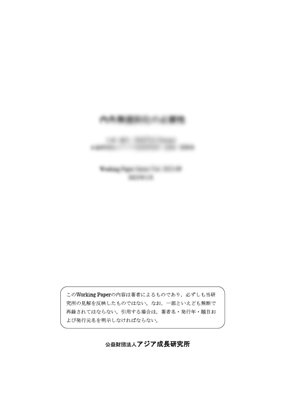Inter-Korean Economic Cooperation: The Need for Reciprocity-Does Lopsided Cooperation Continue to Soothe North’s Bluffing Mentality?-

| 執筆者 | Eui-Gak Hwang |
|---|---|
| 発行年月 | 2008年 7月 |
| No. | 2008-19 |
| ダウンロード | 268KB |
内容紹介
This paper attempts to look into the inter-Korean economic cooperation and trade. It will first briefly review the political background and current status of the idiosyncratic determinants of the inter-Korean economic cooperation and trade, followed by its resultant impacts as well as policy suggestion for the future desirable directions. Over the last 20 years, the intra-trade has increased by about 90 times in its value from 20 million US dollars in 1989 to 1.8 billion US dollars in 2007. Since 1999, in particular, inter-Korean economic cooperation has greatly expanded. Its share of North Korean total trade (export plus import) accounted for 13 % in 1999, 26% in 2005 and greatly jumped to 61.2% in 2007.
Such an increase is mostly due to increasing aids and investments from the South, while economic gap between the North and South is still widening and the North’s cliff-edge strategy has no signs yet to end. The increase in aids and investment from the South owes largely to both non-economic factors to help the deteriorating economy and appeasement policy to lure the bluffer into bright world. The success of such lopsided policy by the South is yet to be seen, but reciprocity principle would likely work better than free lunch type giving policy (chicken humanitarian policy) in insuring the autarchic North toward self-sustaining market economy.
